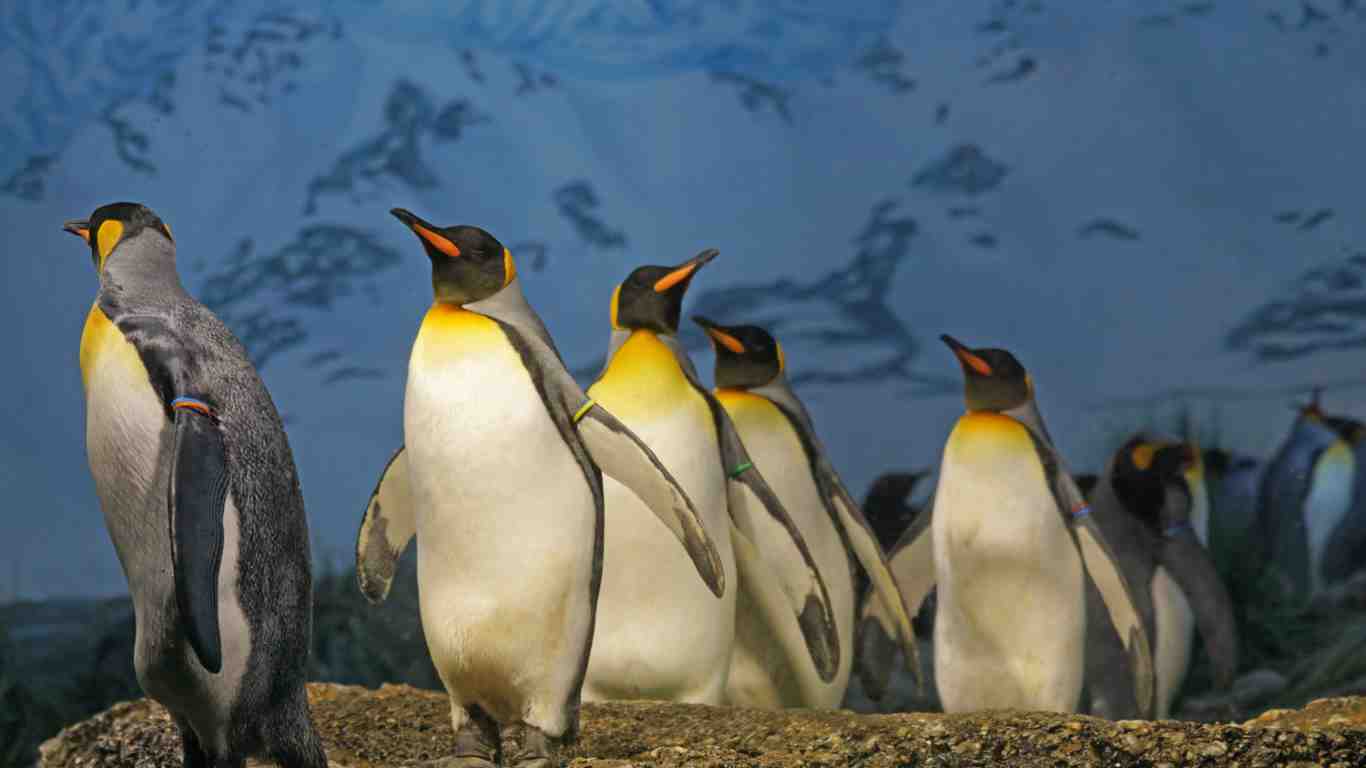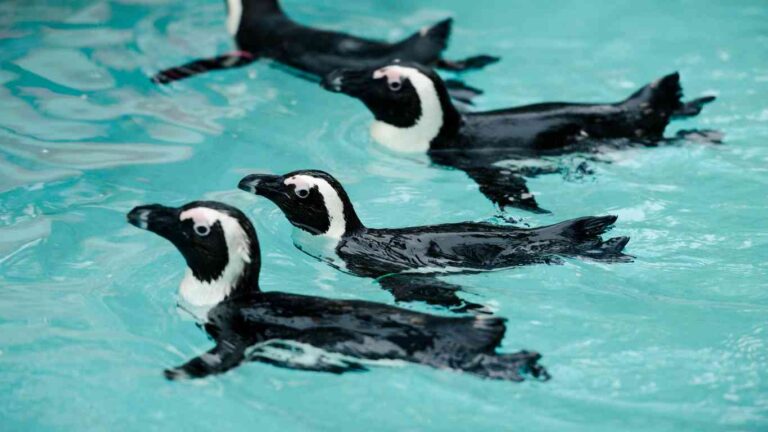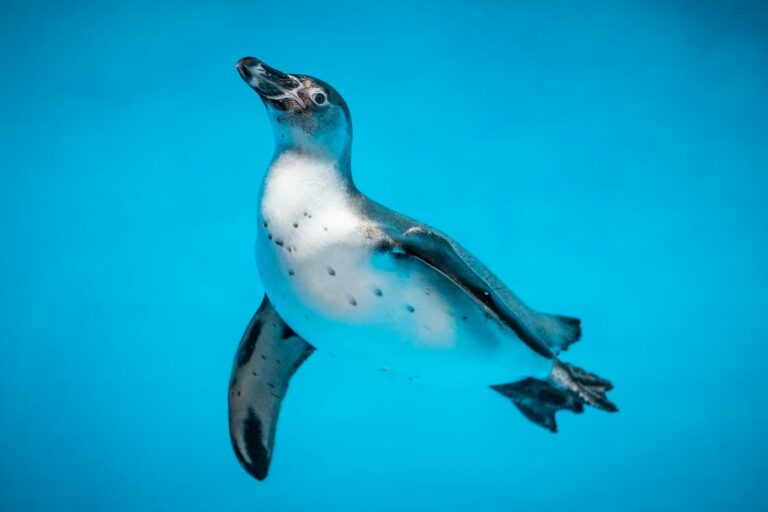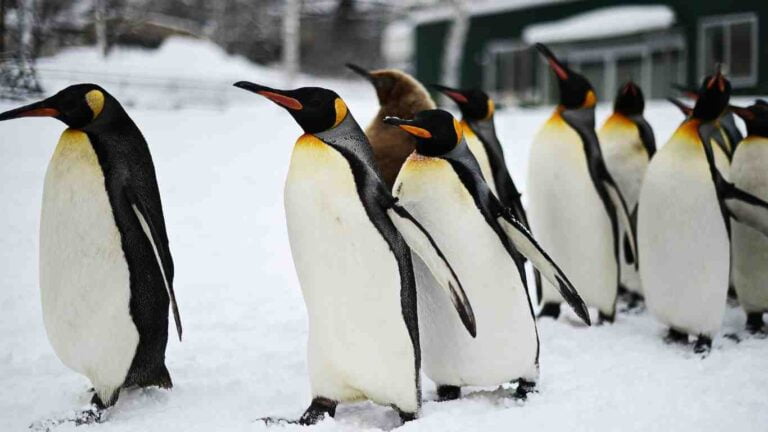Fins or Feathers: Are Penguins Fish?
Penguins are flightless birds, echoing fish only in their seamless, graceful navigation through the ocean’s currents.
The comparison often stops there, as these fascinating creatures boast a suite of extraordinary adaptations that allow them to thrive in some of the world’s harshest environments.
Despite their aquatic prowess, penguins share more in common with your backyard sparrow than with the flitting fish they dine on.
Are Penguins Fish?
Penguins are not fish, they are classified as birds. Specifically, they belong to the group known as Sphenisciformes. Despite their exceptional abilities to swim underwater and their aquatic lifestyle, penguins exhibit key characteristics that define birds.
Fish breathe using gills and are cold-blooded, differing fundamentally from penguins, who breathe air through lungs and maintain a constant internal body temperature irrespective of their marine environment.
For instance, they are warm-blooded, lay eggs, and have feathers that are crucial for both insulation in cold environments and waterproofing for swimming.
Penguins also possess skeletal structures common to birds, such as beaks and wings, although their wings have evolved to function as flippers for swimming.
Their anatomy is built for a life predominantly spent in the ocean, where they hunt for food such as fish, krill, and squid, but they return to land or ice surfaces to breed and raise their young.
Their locomotion on land exhibits a distinctive waddle, further distinguishing them from fish. The life cycle of a penguin also reflects typical avian patterns, including seasonal mating rituals and nest-building behavior, which are atypical of aquatic fish.
Are Penguins Birds or Fish?
Penguins are classified as birds, not fish, due to several biological characteristics, like being warm-blooded and maintaining a constant internal body temperature, unlike cold-blooded fish.
Penguins have feathers for insulation, breathe air through lungs, and lay eggs on land or ice, all typical bird traits. Their ancestry traces back to Theropod dinosaurs, sharing this lineage with modern birds.
Genetically, penguins have DNA sequences specific to birds. Structurally, their light, air-filled bones and wing anatomy, while adapted for swimming, are aligned with birds rather than fish.
Why Are Penguins Birds and Not Fish?
Despite spending a significant amount of time in the water and being excellent swimmers, penguins are classified as birds and not fish. There are several essential biological characteristics that explain this classification.
1. Warm-blooded
Penguins, like all birds, are endothermic or warm-blooded. This means that they maintain a consistent body temperature internally, irrespective of the external environment.
Fish, on the other hand, are cold-blooded, meaning that their body temperature fluctuates with that of their environment.
2. Feathers
Penguins are covered in feathers, which is a definitive characteristic of birds.
These feathers are crucial for insulation, especially given penguins’ habitats in some of the world’s coldest waters. Fish do not have feathers; they have scales that cover their bodies.
3. Lungs for Breathing
Penguins respire through lungs, as do all birds. They breathe air and cannot breathe underwater. Instead, they hold their breath while diving.
Fish possess gills that extract oxygen directly from the water, which allows them to breathe underwater.
4. Laying Eggs
Another trait that classifies penguins as birds is the fact that they reproduce by laying eggs on land or ice. They then incubate these eggs until they hatch.
Fish, in contrast, lay their eggs in water, and most do not incubate them.
5. Bird Ancestry
While their streamlined bodies and way of zipping through the water could lead to misunderstanding, penguins definitely belong to the avian family.
Their evolution traces back to dinosaur kind, specifically Theropods, which is the same ancestral line as today’s birds.
6. Genetic Make-Up
Genetically, penguins are also categorically avian. Their DNA contains sequences and characteristics specific to birds, positioning them far away from the genetic codes typically found in fish.
7. Structural Resemblance to Birds
Their skeleton structure also separates them from fish. Penguins have bones that are air-filled and lightweight, allowing them to stand, walk, or waddle on land – traits that you won’t find in fish.
Furthermore, the anatomy of their wings, although evolved for swimming rather than flying, aligns them with birds.
Wrap Up
To conclude, while their aquatic lifestyle might initially mislead one to classify penguins with marine fish, it’s their anatomy, physiology, reproductive system, evolutionary links, and genetic markers that indisputably identify them as true members of the bird class (Aves).
Penguins are unique and fascinating representatives of the diversity and adaptability found within the Avian kingdom.
(Featured Photo by Pixabay)







